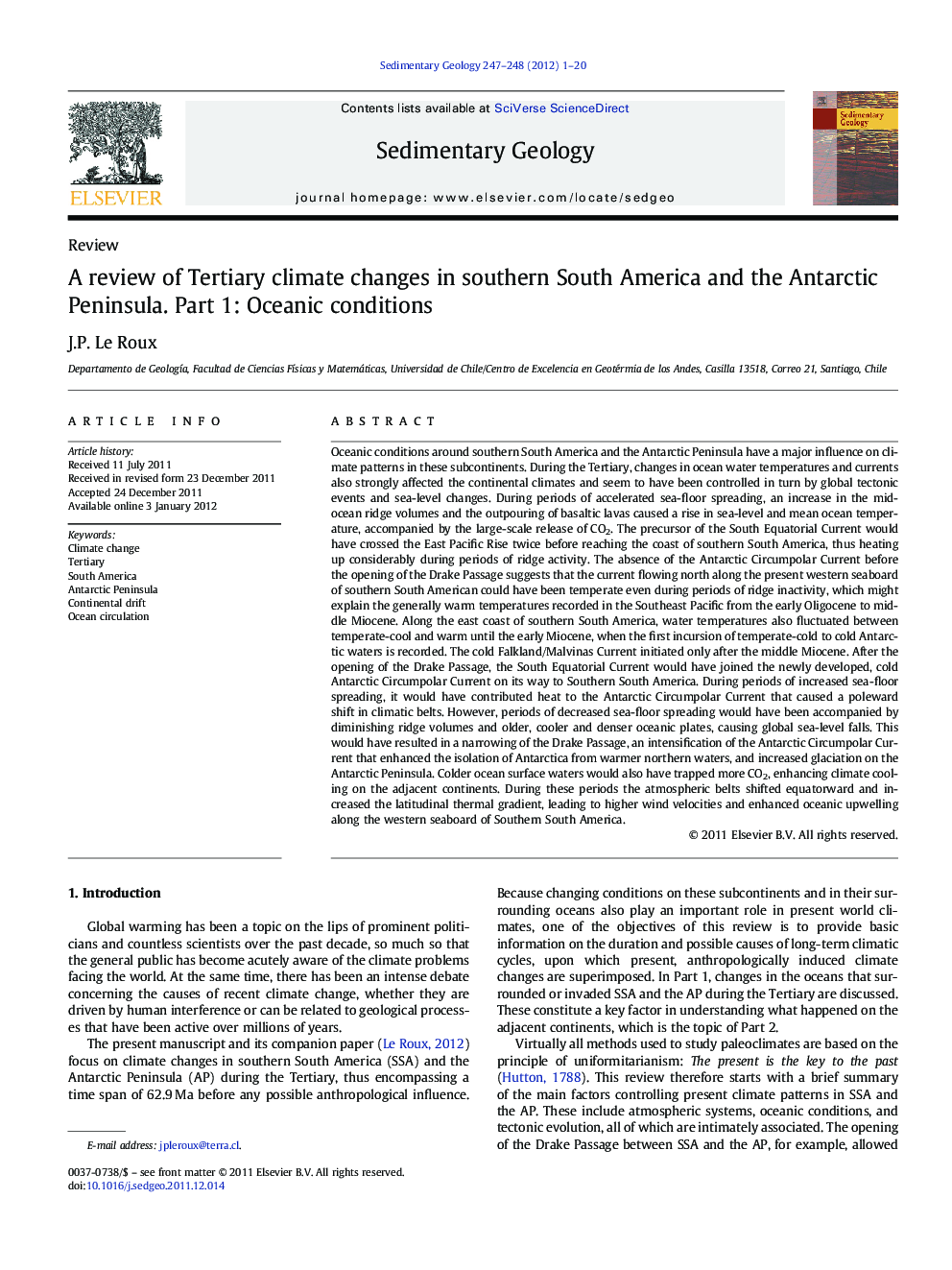| کد مقاله | کد نشریه | سال انتشار | مقاله انگلیسی | نسخه تمام متن |
|---|---|---|---|---|
| 4689902 | 1636097 | 2012 | 20 صفحه PDF | دانلود رایگان |

Oceanic conditions around southern South America and the Antarctic Peninsula have a major influence on climate patterns in these subcontinents. During the Tertiary, changes in ocean water temperatures and currents also strongly affected the continental climates and seem to have been controlled in turn by global tectonic events and sea-level changes. During periods of accelerated sea-floor spreading, an increase in the mid-ocean ridge volumes and the outpouring of basaltic lavas caused a rise in sea-level and mean ocean temperature, accompanied by the large-scale release of CO2. The precursor of the South Equatorial Current would have crossed the East Pacific Rise twice before reaching the coast of southern South America, thus heating up considerably during periods of ridge activity. The absence of the Antarctic Circumpolar Current before the opening of the Drake Passage suggests that the current flowing north along the present western seaboard of southern South American could have been temperate even during periods of ridge inactivity, which might explain the generally warm temperatures recorded in the Southeast Pacific from the early Oligocene to middle Miocene. Along the east coast of southern South America, water temperatures also fluctuated between temperate-cool and warm until the early Miocene, when the first incursion of temperate-cold to cold Antarctic waters is recorded. The cold Falkland/Malvinas Current initiated only after the middle Miocene. After the opening of the Drake Passage, the South Equatorial Current would have joined the newly developed, cold Antarctic Circumpolar Current on its way to Southern South America. During periods of increased sea-floor spreading, it would have contributed heat to the Antarctic Circumpolar Current that caused a poleward shift in climatic belts. However, periods of decreased sea-floor spreading would have been accompanied by diminishing ridge volumes and older, cooler and denser oceanic plates, causing global sea-level falls. This would have resulted in a narrowing of the Drake Passage, an intensification of the Antarctic Circumpolar Current that enhanced the isolation of Antarctica from warmer northern waters, and increased glaciation on the Antarctic Peninsula. Colder ocean surface waters would also have trapped more CO2, enhancing climate cooling on the adjacent continents. During these periods the atmospheric belts shifted equatorward and increased the latitudinal thermal gradient, leading to higher wind velocities and enhanced oceanic upwelling along the western seaboard of Southern South America.
Figure optionsDownload high-quality image (399 K)Download as PowerPoint slide
Journal: Sedimentary Geology - Volumes 247–248, 15 March 2012, Pages 1–20